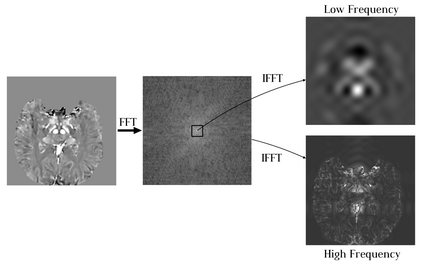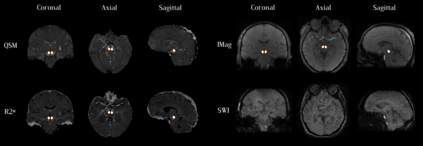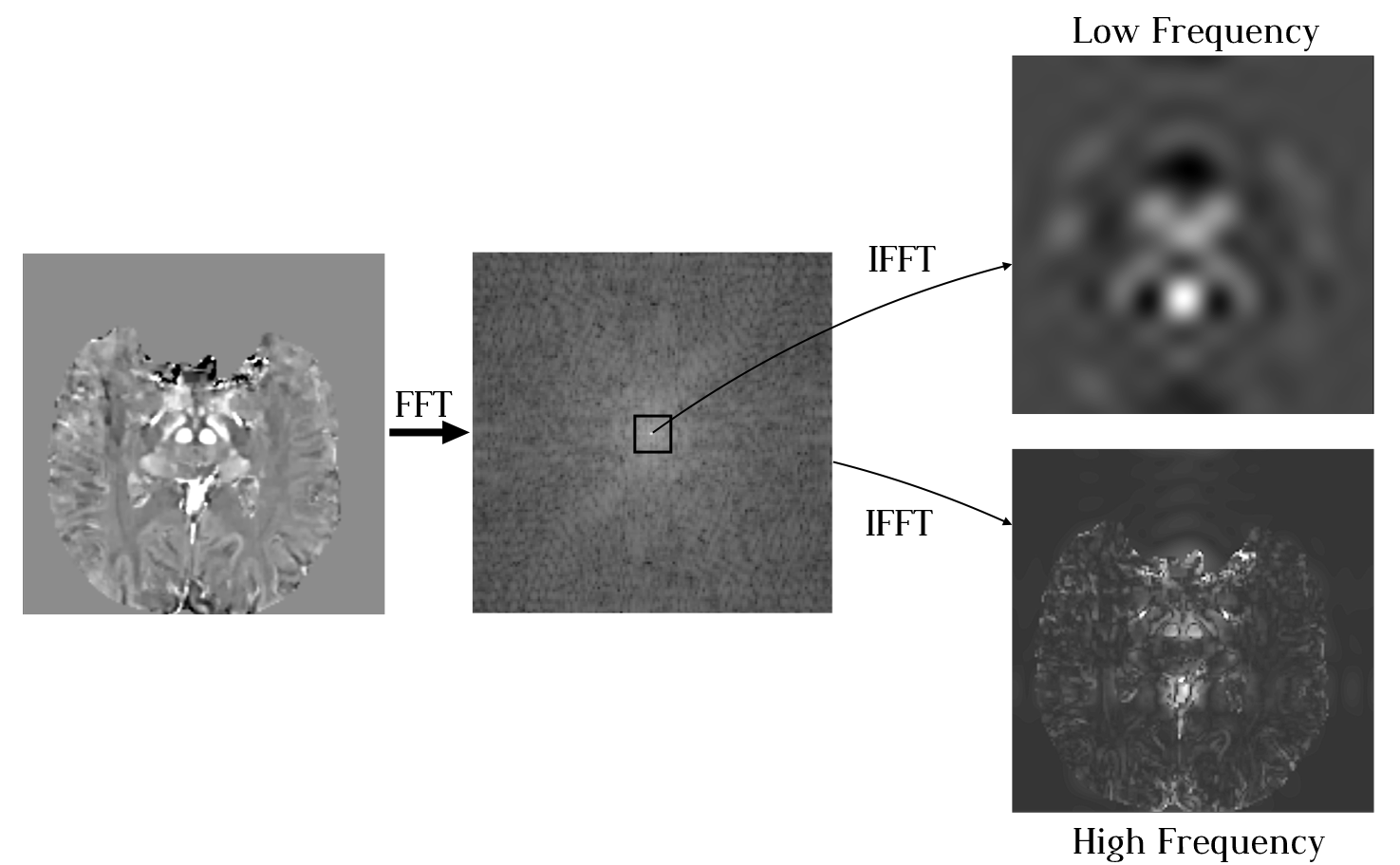Early and accurate diagnosis of parkinsonian syndromes is critical to provide appropriate care to patients and for inclusion in therapeutic trials. The red nucleus is a structure of the midbrain that plays an important role in these disorders. It can be visualized using iron-sensitive magnetic resonance imaging (MRI) sequences. Different iron-sensitive contrasts can be produced with MRI. Combining such multimodal data has the potential to improve segmentation of the red nucleus. Current multimodal segmentation algorithms are computationally consuming, cannot deal with missing modalities and need annotations for all modalities. In this paper, we propose a new model that integrates prior knowledge from different contrasts for red nucleus segmentation. The method consists of three main stages. First, it disentangles the image into high-level information representing the brain structure, and low-frequency information representing the contrast. The high-frequency information is then fed into a network to learn anatomical features, while the list of multimodal low-frequency information is processed by another module. Finally, feature fusion is performed to complete the segmentation task. The proposed method was used with several iron-sensitive contrasts (iMag, QSM, R2*, SWI). Experiments demonstrate that our proposed model substantially outperforms a baseline UNet model when the training set size is very small.
翻译:早期和准确诊断帕金逊综合症对于为病人提供适当护理和将之纳入治疗试验至关重要。红核是中脑的结构结构,在这种疾病中起着重要作用。它可以使用铁敏感磁共振成像(MRI)序列进行视觉化。可以与MRI产生不同的铁敏感反差。将这种多式数据组合起来,有可能改善红核的分解。目前的多式联运分解算法在计算上消耗,无法处理所有模式缺失的模式和说明。在本文中,我们建议了一个新的模型,将红核分解不同对比的先前知识整合在一起。方法由三个主要阶段组成。首先,它将图像分解成代表大脑结构的高层次信息,以及代表对比的低频率信息。然后,高频信息被输入到一个网络,学习解剖特性,而多式联运低频率信息清单则由另一个模块处理。最后,为完成分解任务而进行了特征融合。拟议方法使用了几个对铁敏感模型的模型,在SMI模型中展示了我们提议的SM2模型的大小。







